WELCOME TO NAPLES – In Italian they say, ”Un forestiero quando viene a Napoli piange due volte: quando arriva e quando parte”
Oh Naples, they say, you cry twice when you first see Naples, once when you arrive (because of the chaos) and then again when you are leaving (because you’ve learned to love the chaos)…. The exact translation is as follows: A stranger (foreigner) cries twice when they come to Naples, once when they arrive and again when they leave….
This is the famous sentence from the film ‘Benvenuti al Sud’ (Welcome to the South) spoken by actor Alessandro Siani and now used by footballers (who come to play for Napoli) when they come to leave the south. (For Italian speakers) Questa è la celebre frase completa del film “Benvenuti al Sud”, recitata da Alessandro Siani usato anche oggi da giocatori (footballers) quando partano la città del sud!
What exactly does this mean?
It means that Naples is big and boisterous, loud and chaotic and when you arrive it’s daunting. Totally overwhelming in fact. The city sprawls around the bay and up the hillsides in a disorganised, crowded, carefree and endearing canvas, as unpredictable as a Jackson Pollock painting. However once you get used to it you discover a city that is warm and charming, welcoming and friendly!
Welcome to Naples everyone! Benvenuto in Napoli a tutti!

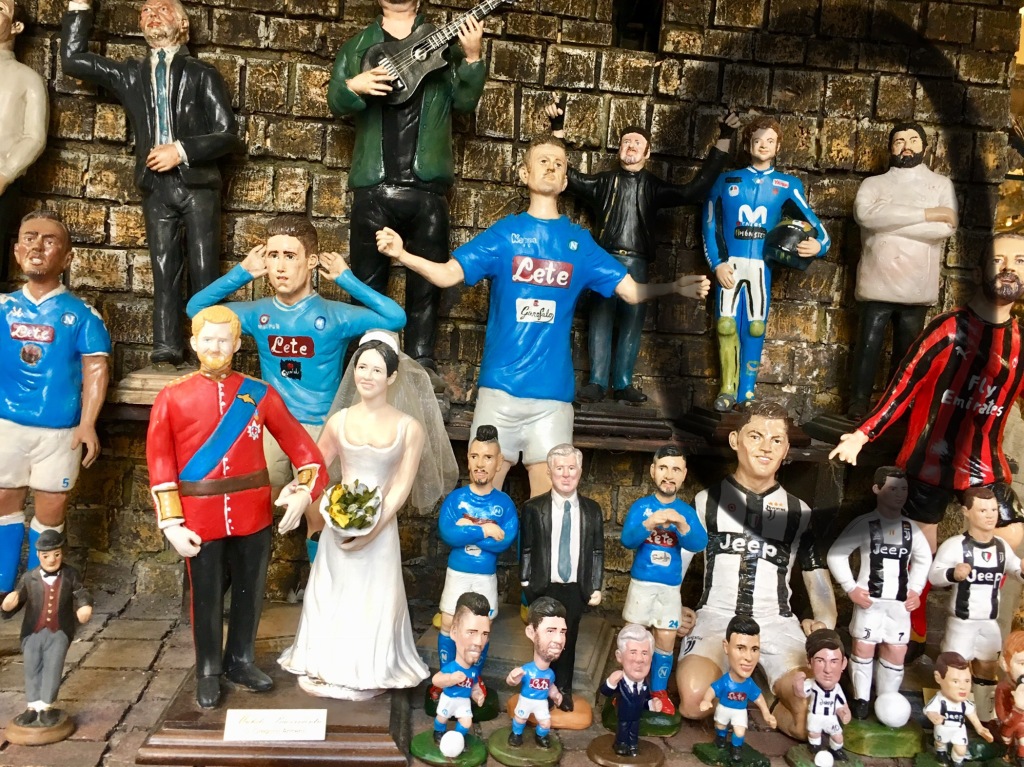

Naples lies on the north side of the Bay of Naples, Vesuvius dominates the entire bay. Naples is full of fun and life and pizza.
HISTORY – It’s hard to know where to start with Naples, the city has such a long history. There’s evidence that people were living in the Naples area at least 3000 years ago, and probably before that too. Naples was originally known as Partenope, it was a small port and safe anchorage for the Greeks, who controlled most of Southern Italy and Sicily. There’s evidence that Partenope existed at least 1000 years BCE (Before Common Era). The port developed and expanded and around 500 BCE the settlement became known as Neapolis (New City). It was an important Greek city and trading centre for the whole of Grecia Magna.
By the time the Romans came along – around 200 BCE there had been a settlement on the site of Naples for at least a thousand years. The Romans incorporated Neapolis into the Roman Empire and gave Neapolis colony status. So conservatively Naples is a city with 3000 years of history and at least three millenia of human habitation. However the next significant event in the history of Naples was entirely outside human control. In 79 AD the giant, brooding volcano that dominates the Bay of Naples erupted in spectacular style. The explosion was so massive that volcanic material was catapulted 21 kms into the Earth’s atmosphere. Pliny the younger, observing the eruption commented that the plume of smoke and debris exploding from the volcano resembled a pine tree, with a straight trunk and numerous branches coming off the main trunk. This apocalyptic event caused the sky to darken, in the words of Pliny, …’but there the darkness was darker and thicker than any night..’
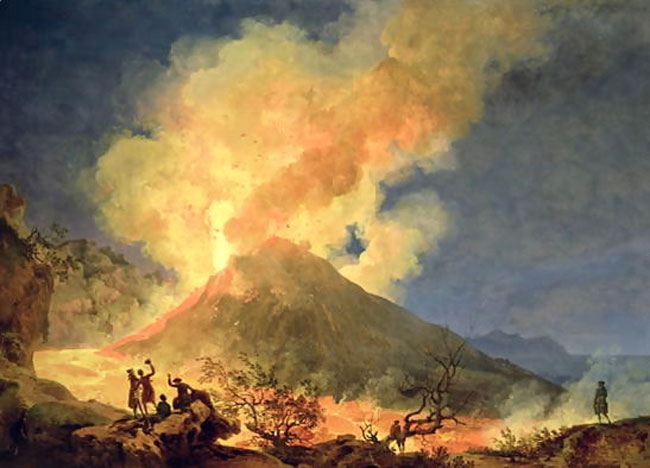
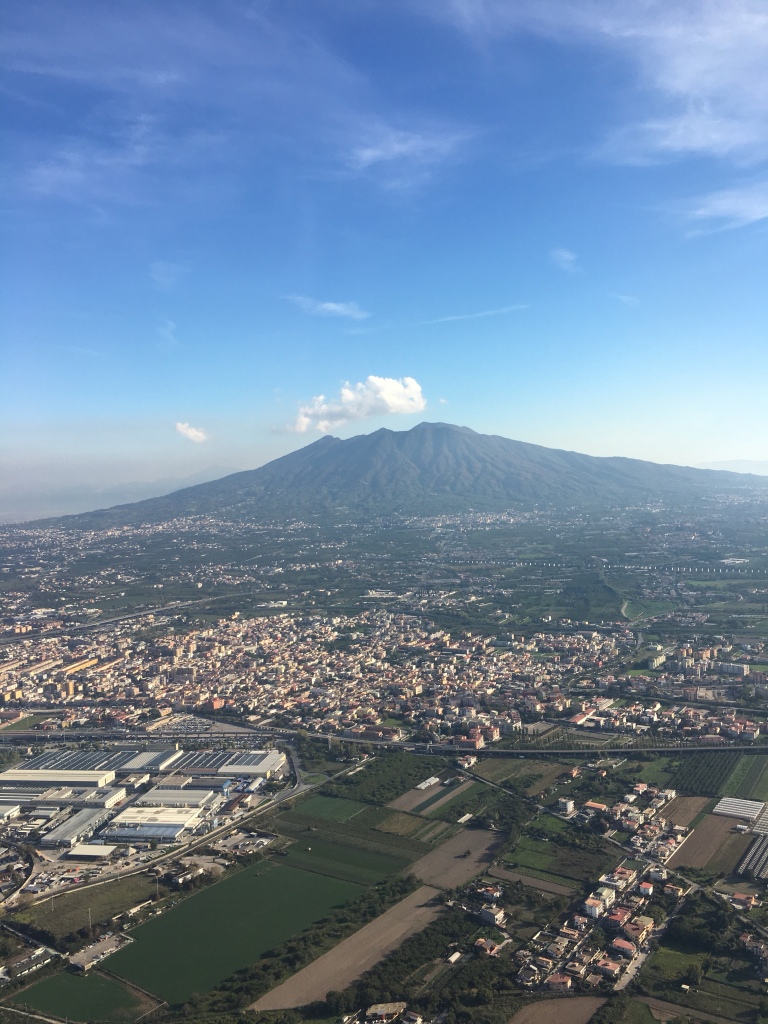

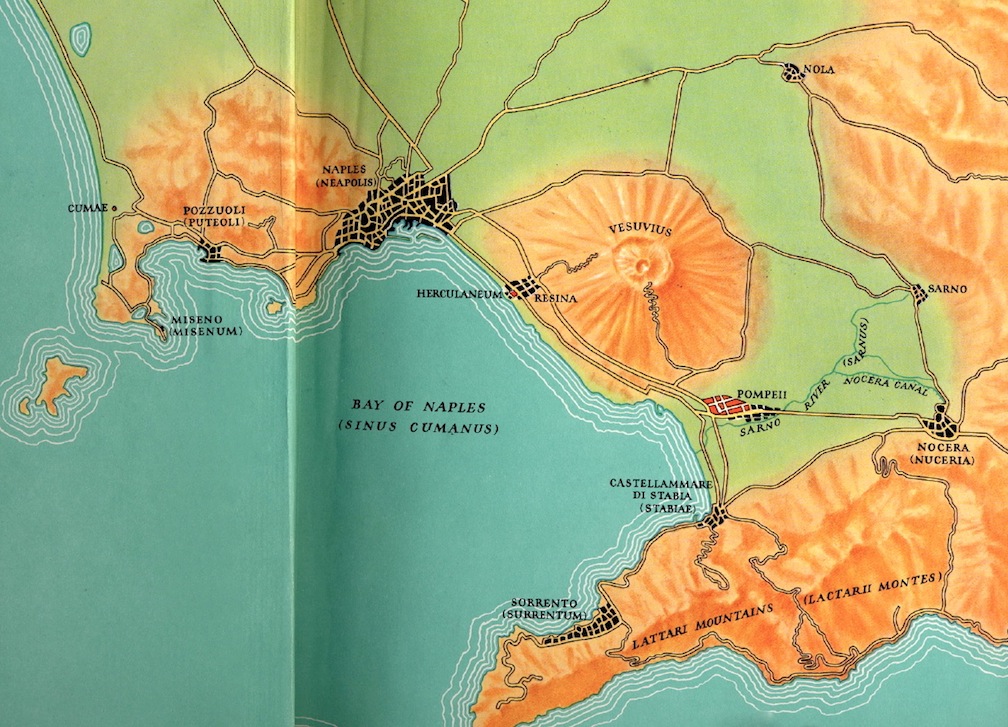
Top left – Vesuvius erupting c. 1780 – Grand Tourists flocked to see the nightly pyrotechnics. Vesuvius dominates the Bay of Naples. Bottom right – relief map showing Naples, Vesuvius + Pompeii (1963).
When Vesuvius erupted in AD 79 huge quantities of steam, rock, volcanic debris, lava and toxic gases poured into the atmosphere. The event was so dramatic that a vacuum occured at sea level and onshore winds of gale force prevented boats from leaving the harbour. The people living in the area were trapped. There was no escape. Rocks and boulders rained from the sky, the air was too toxic and gaseous to breathe. Some people survived longer than others. In Herculaneum, skeletons have been found often cowering in corners, heads covered, in a desperate attempt to survive.
By the time the eruption of Vesuvius finished (after 2 days) the landscape of the Bay of Naples had completely changed. The two towns of Pompeii and Herculaneum had been covered with debris and were buried many meters deep under ash, rock and mud. The new landscape would have been hot and smoking, barren and bleak, rather like the surface of the moon. The two towns were buried, lost and over the years they were forgotten. Then in 1738 about 1,600 years after the great eruption of Vesuvius, a group of men digging a well accidentally unearthed various marble statues buried deep within the ground. The men had discovered the Roman Theatre of Herculaneum.

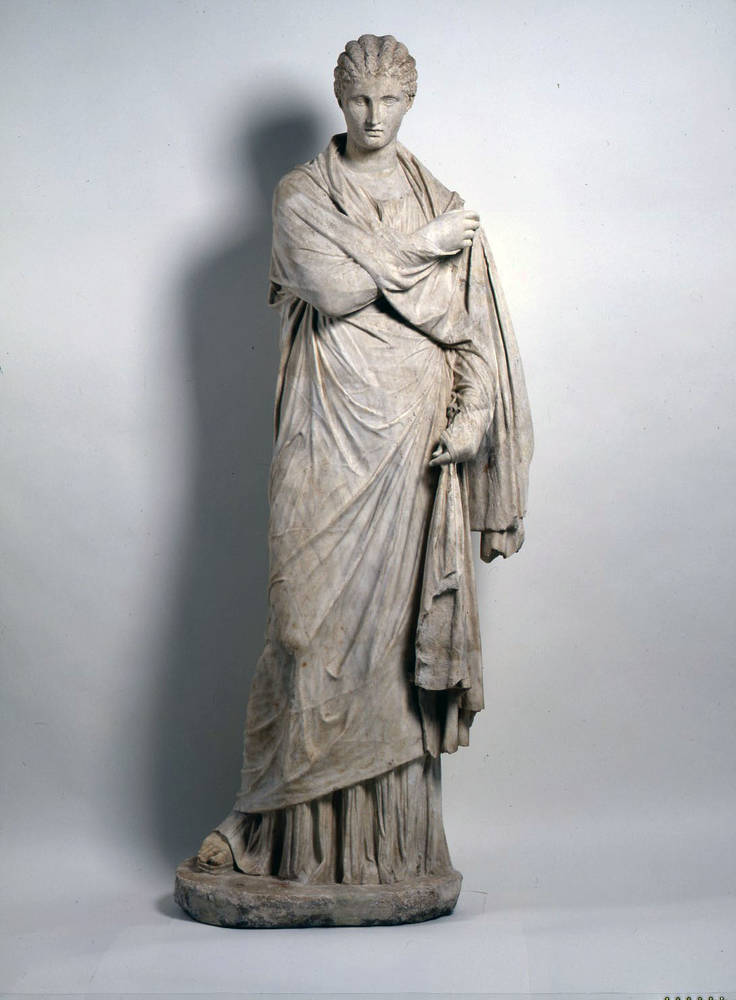
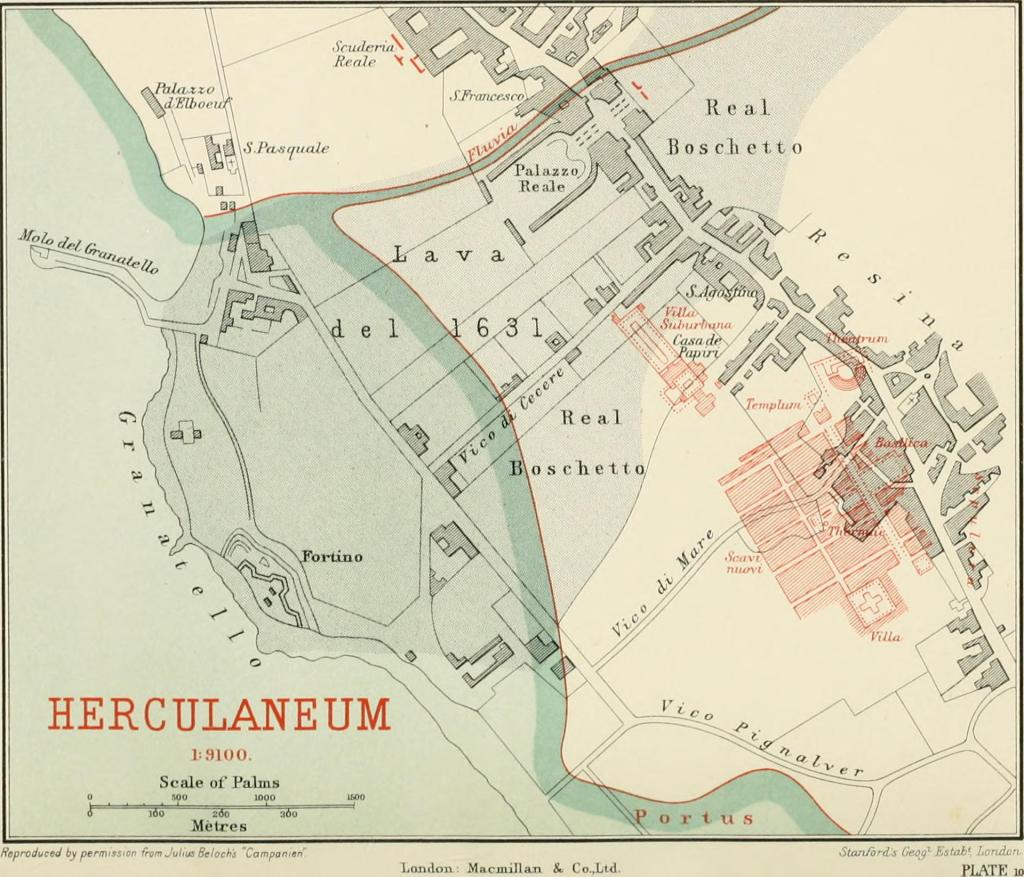
Excavations in Herculaneum and Pompeii were the talk of the town in London, Paris & Vienna
ARCHAEOLOGY – The discovery of statues buried underground just a few miles from Naples created a huge amount of excitement in Europe. Wealthy visitors came to Naples to see for themselves the incredible ancient statues that had been discovered. These visitors were the earliest tourists and came to Naples as part of the Grand Tour. Effectively the science of archaeology was born in Naples with the discovery of the Roman Theatre at Herculaneum in 1738. Excavation work began soon afterwards. Then ten years later in 1748 excavations began at Pompeii. Naples was the talk of Europe.
COSMOPOLITAN NAPLES – Over the years Naples was ruled by numerous outsiders; Normans, French and Spanish. Each of these groups left behind their architecture and style. The Normans built several castles on the water’s edge to fortify the town and its port. The Spanish built the Spanish Quarter that still exists today. The Royal families of Naples built palaces like Caserta (permanent residence) and Capodimonte summer residence), where they lived in a style similar to the French royals before the revolution. The gap between rich and poor was immense. Whilst Sir William Hamilton, British Ambassador to Naples hosted parties at his villa with his beautiful young wife Emma at his side, the poor of Naples struggled to make ends meet.
HEROES – It is in this context of rich and poor that Napoli produced one of the city’s most famous sons. Whilst wealthy Neapolitans built palaces and grand villas to live in, the poor of Naples lived in over-crowded, unsanitary conditions. ‘Rione Sanita’ the ironically named Neighbourhood of Health was one of the poorest districts in the city. It was into this squalid and unsanitary poverty that ‘Toto’ one of the most famous Italian comedians of the 20th century was born in 1890. ‘Toto’ is the Italian equivalent of Charlie Chaplin mixed up with a generous portion of Benny Hill. He starred in dozens of films from the 1940s until the 1960s. As an illegitimate child whose father refused to recognise him, his rags-to-riches story is close to many Neapolitan hearts. Even today ‘Toto’ is an idol and a hero in Naples.
IDOLS – On the subject of idols, the people of Naples are also passionate about football. The town’s team is SSC Napoli (Società Sportiva Calcio Napoli). They wear blue shirts and are known as the ‘Azzurri’ or the ‘Partenopei’. When Maradona, the Argentinian superstar player arrived to play for Napoli in 1984 the fans went wild. Maradona adored Naples and the fans adored him. It was a marriage made in heaven.
In the words of football journalist Carlo Garganese…
‘In Naples, he [Maradona] would find a team, city and public that endured the same problems as he did growing up. It was a dysfunctional, downtrodden, yet hugely passionate city – particularly when it came to football – that suffered from mass poverty, unemployment and organised crime, and was depicted as a stain on Italy by the aristocratic, industrial north. “I want to become the idol of the poor children of Naples because they are like I was when I lived in Buenos Aires,” The golden boy would say on his first day as a player there’.



PIZZA – Everyone wants to know where the best pizza place in Naples is – you can ask ten different people and they’ll each give you a different answer. Some of the more famous ones include: Pizzeria Presidente (named after President Clinton’s visit there in the 80s), there’s Pizzeria Michele (many say this is the best), Pizzeria Lombardia (said to be the oldest) and then there’s Sorbillo – which claimed to be a UNESCO world heritage site for a while – it isn’t! So my recommendation would be, go to the one you like the look of and don’t stand in a queue, there’s no need for that in Napoli.
CREATIVITY – the people of Naples are friendly and creative, there’s always a solution to life’s challenges. It’s just a question of thinking laterally. This approach to life and the vast chasm between rich and poor created the perfect environment for individuals to operate outside the law. As a very well informed friend of mine told me recently, ….’the streets aren’t dangerous anymore, they are still there you know, but they are not fighting in the streets, instead they are in the body, they are in the veins, they are inside the system…’
So what do you think, amazing beautiful city or a chaotic quagmire from which you are desperate to escape? You either love it or hate it. In Naples it’s possible to experience every kind of emotion all in one day. As my Italian friends would say to me – Allora cosa dici?! E bella la città partenopea o no!!


Notes:
- Here’s an article I wrote about Italian films a few years ago – where I discuss the wonderful film ‘Benvenuti al Sud’ and other films – The Leopard and other exceptional Italian Films…
- An article I wrote about Vesuvius & Herculaneum – Vesuvius – Herculaneum & Pompeii
- When the fabulous Francesco Sirano was appointed ‘Direttore’ at Ercolano: Herculaneum – a very bright future…..
- For a bit of fun relating to craziness in Naples: Naples, A Crazy Prince and fantastic pizza…
- It’s worth following the Herculaneum Society based in Oxford. https://www.herculaneum.ox.ac.uk/
- It’s hard to over-estimate the impact and influence the discovery of Herculaneum & Pompeii had on the chattering classes in 18th century drawing rooms. Think Jane Austen. History of the Grand Tour
- For American readers (in particular): The Getty Villa (Malibu) is modeled on the Villa dei Papiri at Herculaneum. Buried by the eruption of Mount Vesuvius in AD 79, the ancient villa was rediscovered and explored by subterranean tunnels in the 1750s and ’60s and was partially re-excavated in the 1990s and early 2000s. It has yielded colorful marble and mosaic floors, frescoed walls, a large collection of bronze and marble statuary, and a unique library of more than a thousand papyrus scrolls. https://www.getty.edu/art/exhibitions/villa_papiri/
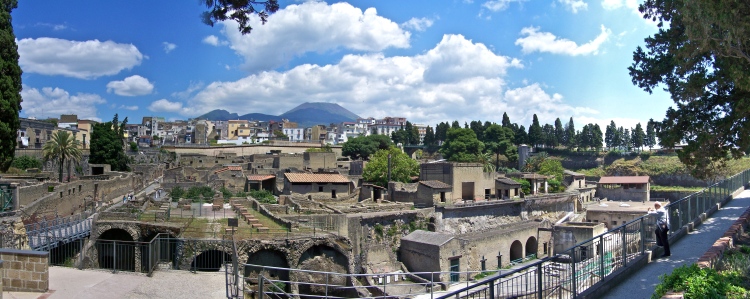
- #grandtourist
- #herculaneum
- #vesuvius
- #ercolano
- #educatedtraveller
15th June 2024
